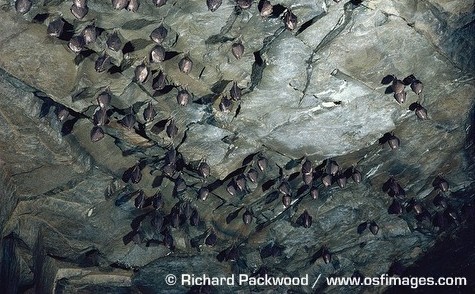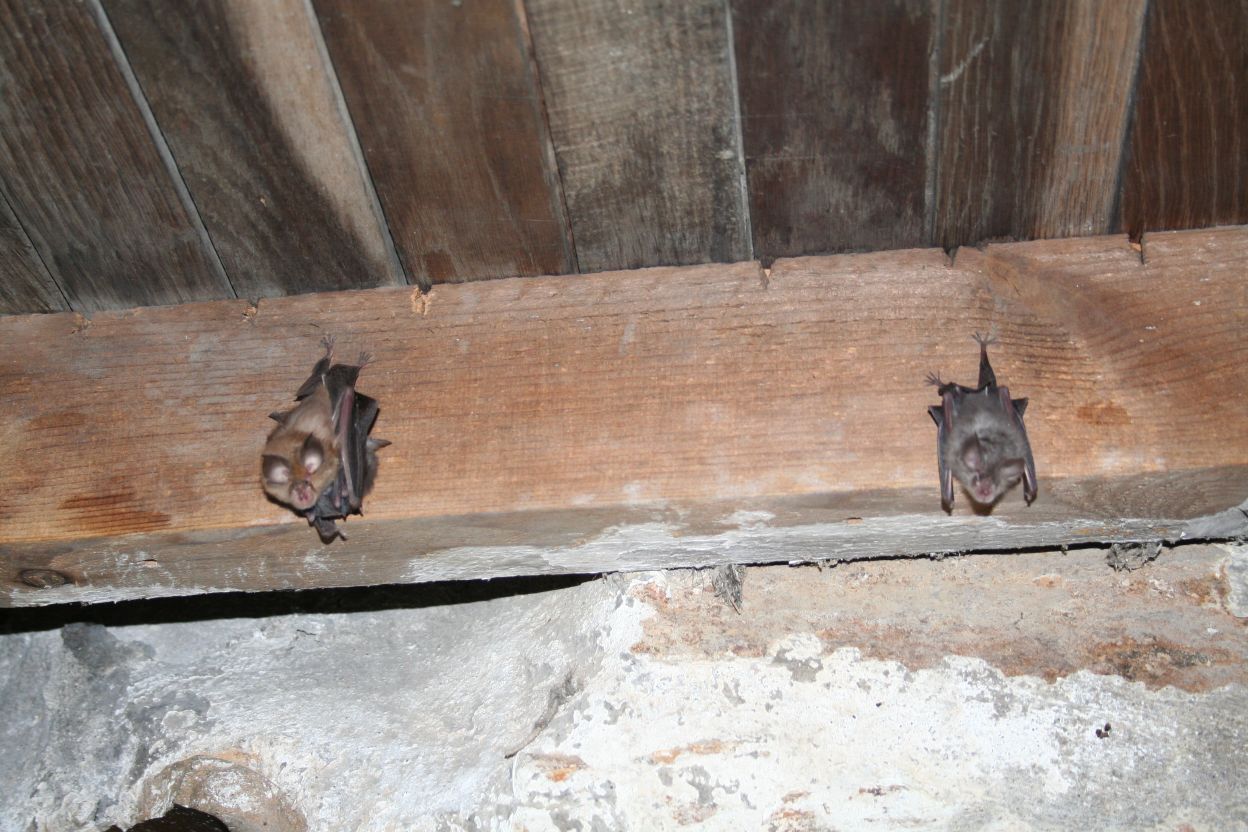Roosting ecology - maternity roosts

Lesser horseshoe bats mainly roost in buildings during the summer months (May - Sept) prefering 16th century buildings, often with stone walls, slate roofs and uninterupted flight access (Schofield 2008). During this time some bats will occasionally use alternative day roosts (satellite roosts), but the colony as a whole will remain in the same roost (Knight 2006). Research suggests that this occasional roost switching may be related to the energetics of breeding (Seckerdieck et al. 2005).
Bats also use night roosts away from the maternity roost inbetween foraging bouts. These are often in buildings and located within 1-2km of the maternity roost (Knight 2006). It is believed that night roosts are used to minimise energetic losses during periods of reduced prey availiability (Anthony 1981) or in periods of high energetic demand when females are heavily pregnant. It is also suggested that night roosts are used to facilitate information transfer between individuals (Kunz 1982; Wilkinson 1992).

 Lesser horseshoe bats hibernate during the winter in underground caves, mines and cellars, which are humid (reducing the need to drink) and range between 4-12 degrees celsius (Ransome 1991). Hibernation roosts are typically within 5km of the maternity roost but on occasion have been 20km away (Schofield & Mitchel-Jones 2004). Bats are not in a static state throughout hibernation, often waking to feed and drink during the spring and autumn (Ransome 1991).
Lesser horseshoe bats hibernate during the winter in underground caves, mines and cellars, which are humid (reducing the need to drink) and range between 4-12 degrees celsius (Ransome 1991). Hibernation roosts are typically within 5km of the maternity roost but on occasion have been 20km away (Schofield & Mitchel-Jones 2004). Bats are not in a static state throughout hibernation, often waking to feed and drink during the spring and autumn (Ransome 1991).